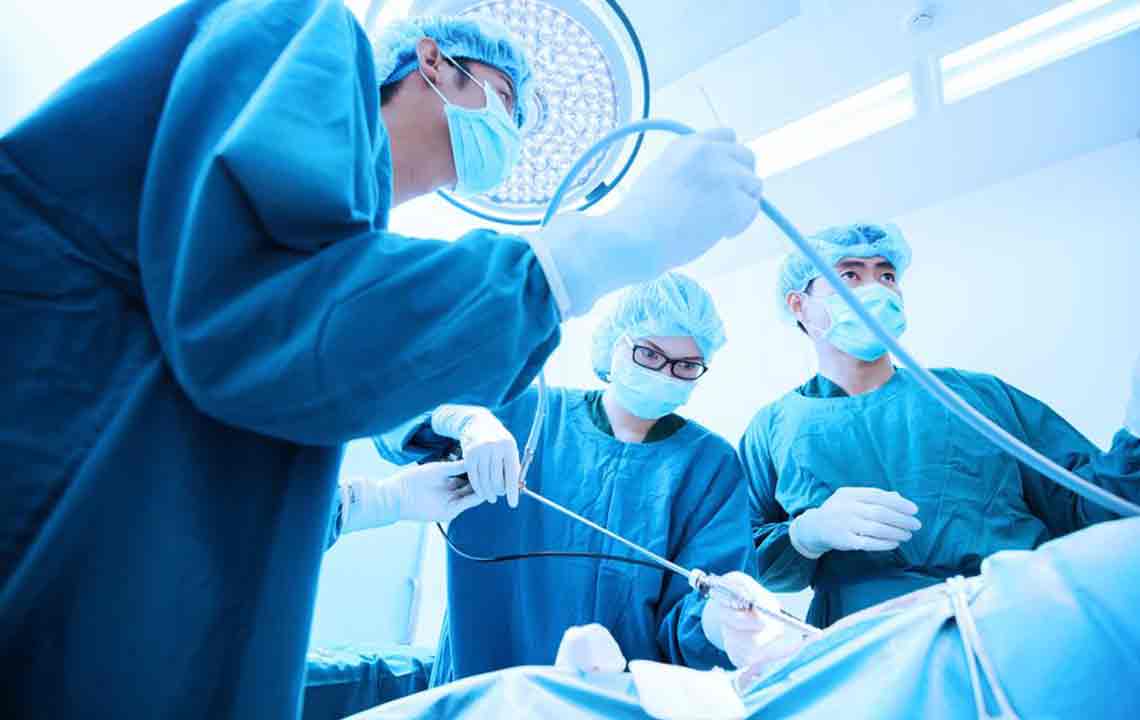Effective Treatment Options for a Hernia
A hernia occurs when an organ of your body bulges out through an opening in the tissue or muscle holding it in place. This is most common in the abdominal area, where the intestine breaks through the abdominal wall; however, it can also occur in the upper thigh, near the belly button, or in the groin area. Depending on which organ has been affected, there are five main types of hernia.

Inguinal hernia
This occurs when the intestine pushes through a weak spot on the abdominal wall. This is the most common type of a hernia.
Hiatal hernia
This occurs when your stomach bulges into your chest through the diaphragm (it separates the organs in your lungs from the organs in your abdomen).
Umbilical hernia
This type of a hernia only occurs in babies aged six months or less. Their intestines protrude from their abdominal wall near the belly button.
Incisional hernia
This happens when you have undergone surgery in your abdomen, and your intestine pushes through the scar from your surgery or in the surrounding area that has become weak.
Femoral hernia
This type of a hernia generally occurs when a fatty tissue or a part of your bowel bulges through your groin into the femoral canal on the upper part of your inner thigh.
Treatments for hernia
The following ways are effective treatments for hernia. You can follow these to get timely relief from the discomfort experienced.
Lifestyle changes
Some changes in your diet can help cure the symptoms of a hiatal hernia. Make sure that you don’t eat extremely heavy meals or lie down or bend over right after the meal. It also helps if you maintain your weight in a healthy range. If this isn’t sufficient to cure the symptoms, a surgery would be recommended as one of the treatments for hernia. You can also improve your symptoms by avoiding foods that cause acid reflux and avoiding cigarettes.
Medication
Some over-the-counter medication for reducing acid reflux can help improve your hernia symptoms. These medications can act as effective treatments for hernia.
Exercise
There are also some exercises that you can do to treat a hernia. The best way of treatment for a hernia is through these exercises.
- One is where you lie down on your back with your feet at a raised position. With someone’s help, you can either try to spread your legs apart or raise them up higher while your assistant resists.
- You can perform a self-massage for a hiatal hernia where you lie down on your back and place your fingers right below your rib cage. Press down and slowly move your fingers down to your belly button. Repeat this for five minutes daily.
- There is another exercise where you use warm water to help with your hiatal hernia. Right after waking up, drink a glass of warm water, and stand up with your arms out sideways but your elbows bent inwards. Rise onto your toes and drop down rapidly and repeat this several times. After this, throw your arms up and take several short breaths for about 15 seconds. This helps to drop your stomach into your abdomen and then tighten the diaphragm to heal a hernia.
Remember to consult with your doctor before performing these exercises as treatments for hernia because the difference in everyone’s metabolism doesn’t produce the same results for all.
Surgery
When a hernia continues to grow larger and cause more pain, it is best to consult with a doctor and get it operated. During the surgery, the doctors generally replace the organ back to its position or cut it off if it has suffered strangulation (oxygen cut off). The hole in the wall is then stitched up, generally with a surgical mesh. It is necessary that you understand the symptoms of a hernia in the early stages so that effective treatments for hernia can be recommended. A hernia doesn’t cure on itself, and special attention is needed as severe cases can even prove fatal.
Surgery methods as treatment options for a hernia
A general surgeon can perform the following types of hernia surgery on you.
Open surgery
In this, the doctor makes an incision into the skin near a hernia, and the organ is pushed back into its place. The muscle wall is then stitched up. This method is suited better for smaller hernias or in cases where it is possible to use stitches without causing any harm to the tissue. The approach, however, depends on how big the hernia is. Most times, the patient can head home on the same day as the surgery but the recovery time lasts up to three weeks. Make sure you only perform strenuous exercise after six weeks.
Laparoscopic surgery
This method is relatively new compared to the open surgery but requires smaller incisions. In this method, the surgeon makes two to four small incisions near a hernia, through which the doctor will insert a camera and the instruments.
The camera has a light and is connected to a monitor to display the insides of your abdomen. Gas is used to inflate the abdomen to give the surgeon some space to work. Similar to the open surgery, they return a hernia to its position and the tear in the muscle is stitched up. Once a hernia is treated, they remove the gas and the abdomen returns to normal.
Most times, hernias aren’t life-threatening, but since they don’t get cured on their own, they may need to be treated with surgery to prevent complications. Make sure that you speak with your doctor before undertaking any of the treatments for hernia as mentioned above.